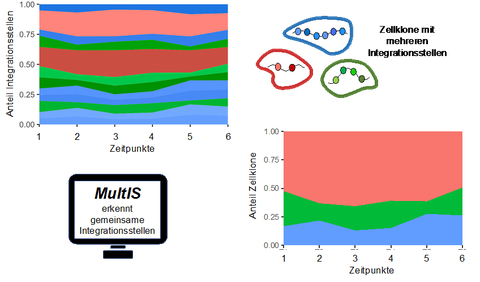Jul 18, 2022
Tracking down the clones - improving diagnosis with bioinformatics

Tracking down the clones - improving diagnosis with bioinformatics
Tracking down the clones - improving diagnosis with bioinformatics
(Bioinformatic methods improve the assessment of clonality in gene therapy patients)
Gene therapies (GT) aim to compensate for the missing functionality of a mutated gene by inserting one or more corrected gene copies into the genome of transplantable patient cells. Typically, the virally mediated insertions occur randomly in the target genome. The tumor risk associated with these integrations has been largely minimized by improvements in vector technology. Nevertheless, quantification of the specific viral integration sites is used to estimate the relative proportion of altered cells and to detect any expansion processes in a timely manner. However, multiple integrations within a cell may result in the detection of more than one integration site per cell clone. Since it is not possible to determine in advance whether integration sites are clustered in one clone or describe different clones, the number of clones can easily be overestimated while their relative size is underestimated.
Researchers from the Institute for Medical Informatics and Biometry (IMB) at TU Dresden, together with colleagues from the San Raffaele-Telethon Institute for Gene Therapy in Milan (Italy), developed a bioinformatical method (named MultIS) to identify typical patterns in time-course data of repeated integration site measurements that indicate a common clonal origin. Mathematical models were used to establish and validate the method. Further examples for in vitro and in vivo data demonstrate the broad applicability of the method and also confirm that clonal associations of integration sites within a cell clone can be identified in time course data obtained after a gene therapeutic intervention. Our results show that the presented methodology allows to overcome systematic biases in clonal quantification and thus represents an essential prerequisite for a better assessment of the safety and long-term efficacy of gene therapies. Thus, in perspective, it will be possible to assess clonal dynamics in gene therapy patients at an early stage and to initiate appropriate countermeasures if necessary.
The results of this work were published in Nature Communications on June 28, 2022 (S. Wagner et al, Clonal reconstruction from co-occurrence of vector integration sites accurately quantifies expanding clones in vivo, https://www.nature.com/articles/s41467-022-31292-6).
